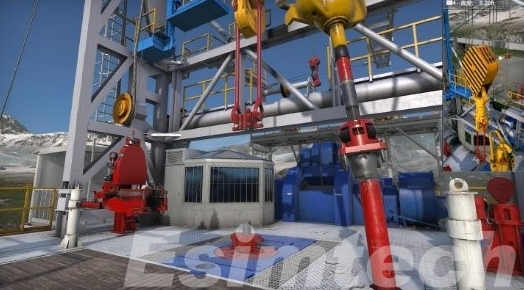The Crucial Role of Driller's Method in Well Control
In the dynamic realm of oil and gas drilling, ensuring the stability and safety of a well stands as a critical priority. When unforeseen circumstances arise, such as kicks or blowouts, well control methods like the Driller's Method become indispensable in regaining control over the well. This article offers a thorough examination of the Driller's Method in Well Control, exploring its mechanics, historical context, and the crucial role of well control training simulations in mastering this essential technique.

Understanding the Basics of the Driller's Method in Well Control:
1. Basics of Well Control: Before delving into the specifics of the Driller's Method, it's essential to grasp the broader concept of well control. Well control encompasses various techniques and strategies aimed at managing and regulating pressure within the wellbore. This meticulous pressure control is not just a matter of operational convenience but a fundamental aspect ensuring safety and environmental protection in drilling operations.
2. Key Techniques Used in the Driller's Method:
Recognition and Well Closure: The process begins with identifying irregular pressure conditions within the well, often triggered by an influx like a gas or oil kick. Prompt action is then taken to shut down the well by activating the blowout preventer (BOP) and halting drilling operations to prevent further influx of fluids or hydrocarbons.
Pressure Assessment: A detailed assessment of downhole conditions follows, evaluating both pressure and volume associated with the kick. Accurate measurements lay the groundwork for effective implementation of the Driller's Method.
First Circulation: With the well shut in, the drilling team initiates the first circulation. Heavy drilling mud, typically weighted with barite, is pumped down the drill string and into the well to gradually increase mud density and balance formation pressure, halting the influx.
Pressure Monitoring: Continuous monitoring of pressure at the wellhead occurs during the first circulation. Observing pressure response helps the drilling team gauge the effectiveness of introducing heavy mud.
Second Circulation: Once pressure stabilizes to match desired bottom hole pressure (BHP), the first circulation concludes. The drilling team then proceeds with the second circulation, circulating drilling mud out of the well to replace the lighter mud or influx introduced during the kick.
The Importance of the Driller's Method:
The Driller's Method holds significance as a pivotal well control approach due to its focus on maintaining constant BHP. This technique not only helps regain control over a well but also minimizes the risk of wellbore instability, additional complications, and potential equipment damage. Through the use of heavy drilling mud and a systematic approach, drilling professionals effectively manage unexpected kicks or blowouts, ensuring personnel safety and environmental protection.
Benefits of the Driller's Method:
Safety: Prioritizes safety by promptly addressing well control incidents, minimizing the risk of uncontrolled flow and potential blowouts.
Equipment Protection: Prevents damage to drilling equipment caused by excessive pressure and flow rates during well control incidents.
Environmental Preservation: Averts environmental disasters by preventing uncontrolled oil or gas releases that could lead to pollution and ecological damage.
Operational Efficiency: Allows drilling operations to resume swiftly and efficiently after a well control incident, minimizing downtime and financial losses.
Role of Well Control Training Simulations for the Driller's Method:
Well control training plays a crucial role in preparing drilling personnel to effectively implement techniques like the Driller's Method. Simulation-based training offers a safe and immersive learning environment, allowing drilling crews to practice and refine their skills in responding to well control incidents.

Simulation in Well Control Training:
Realistic Scenarios: Well control simulators recreate well control incidents accurately, providing trainees with realistic experiences.
Safe Learning Environment: Allows personnel to practice well control techniques without the risks associated with live drilling operations.
Scenario Customization: Simulations can be tailored to mimic specific drilling conditions, enabling personnel to train for their work environment.
Repeatable Training: Trainees can repeat scenarios to build proficiency and confidence in responding to well control incidents.
Feedback and Assessment: Provides immediate feedback on trainees' actions and decisions, facilitating continuous improvement.
Crew Coordination: Facilitates team training, helping drilling crews work together effectively in high-pressure situations.
Conclusion:
Safety and precision are paramount in oil and gas drilling, making techniques like the Driller's Method indispensable. By prioritizing safety, protecting equipment, and preserving the environment, the Driller's Method ensures responsible drilling practices. Well control training simulations play a vital role in preparing drilling personnel for well control incidents, contributing to safer and more efficient drilling operations in the ever-evolving industry.
- Sanat
- Doğa
- El sanatları
- Dans
- İçecekler
- Film
- Kondisyon
- Gıda
- Oyunlar
- Bahçıvanlık
- Sağlık
- Ev
- Edebiyat
- Müzik
- Networking
- Diğer
- Parti
- Din
- Alışveriş
- Spor Dalları
- Tiyatro
- Yaşam
